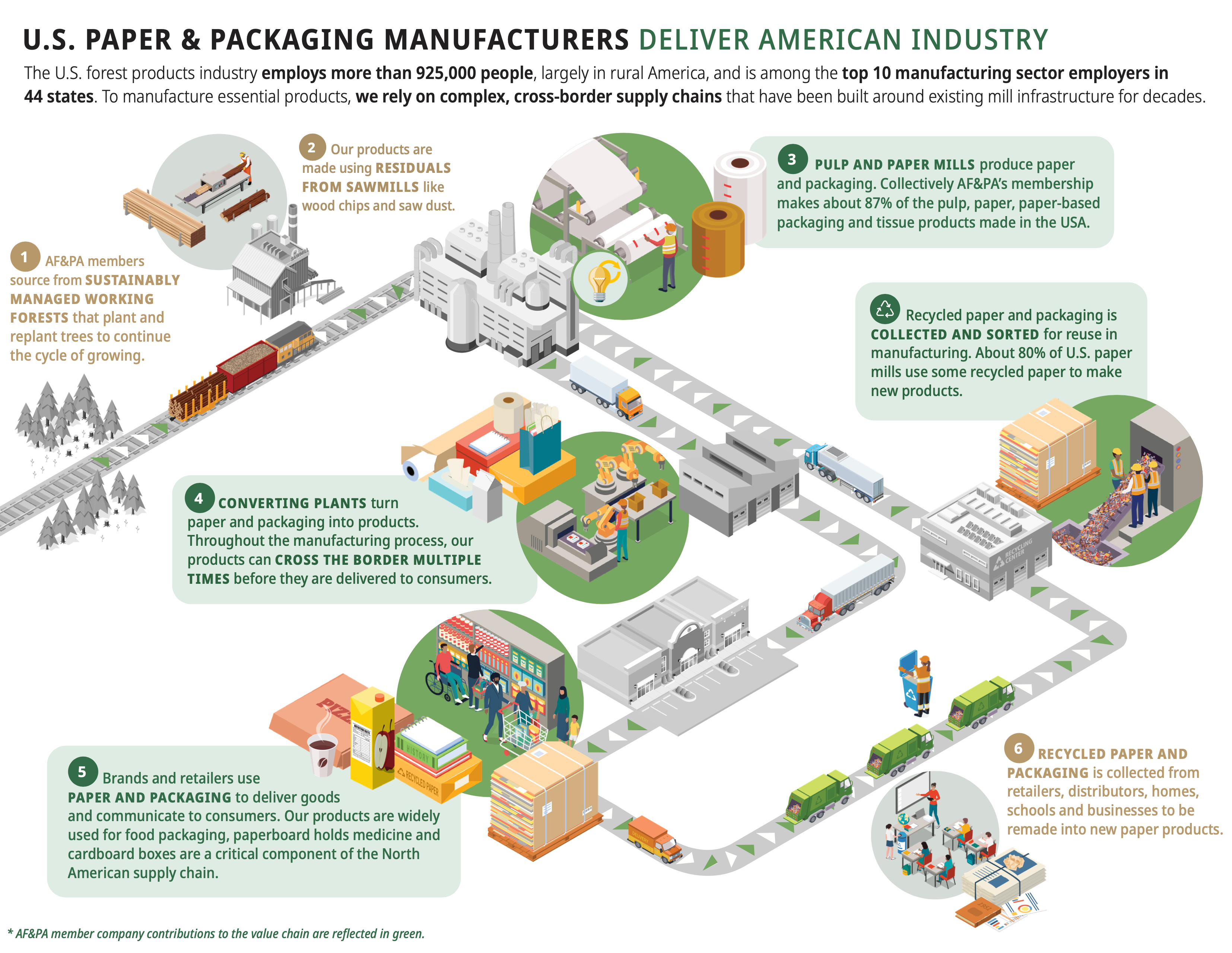Understanding the Circular Economy and the Forest Products Industry
Advancing Sustainability and Economic Growth
As we look to the future, we continue to advance the circular economy. Let’s dive into what that means!
What is the Circular Economy?
The Ellen MacArthur Foundation defines the circular economy as “A circular economy is one that is restorative and regenerative by design and aims to keep products, components, and materials at their highest utility and value at all times, distinguishing between technical and biological cycles.”
The circular economy makes the most of resources, reduces waste and creates lasting value.
It's a cycle that keeps going. Instead of throwing things away, we look for ways to make them useful again.
The traditional linear economy follows the "take-make-dispose" approach. The circular economy promotes a closed-loop system. Resources reused for as long as possible through recycling, repurposing and remanufacturing.
Why Does the Circular Economy Matter?
Increasing circularity in our economy builds resilience, generates new business opportunities and provides economic, environmental and social benefits.
The circular economy prioritizes resource conservation and sustainable supply chains.
The Forest Products Industry & the Circular Economy
The forest products industry is inherently circular in its supply chain. Trees are replanted to supply fiber and enhance the environment. And paper and packaging are recycled to make new products. This is how our industry is contributing to a more sustainable future.
Let’s break it down:
- It starts with sustainably managed forests that supply wood fiber for manufacturing. Most forests in the U.S. are privately owned by small landowners. More than 1 billion trees are planted in the U.S. each year.
- Sawmills use sustainably harvested wood to make wood products.
- Wood fiber from sawmills is also used, often with recycled paper, to manufacture paper and packaging. Converting mills turn this paper into products.
- The paper and packaging industry uses renewable biomass energy residuals – left over wood fiber and other manufacturing materials – to power mills.
- Paper-based packaging is a sustainable option that allows brands to deliver products safely and communicate with consumers. After use, packaging is collected and sent back to mills to be recycled.
In the United States, 94% of the people have access to community recycling programs for paper. And 79% of Americans have access to residential-curbside programs, making it efficient and effective to recycle paper at home.
Many of our member companies own and operate material recovery facilities and collection programs. - As this process comes full circle, the recycled paper is sorted and fed back into our manufacturing process to make new products.
The Circular Economy in Action
AF&PA members goal to advance the circular value chain aims to:
- Maximize efficient use of resources including fiber.
- Reuse water and other resources multiple times.
- Utilize manufacturing byproducts to produce carbon-neutral biomass energy.
- And optimize the use of non-renewable resources.

How Can You Support a Circular Economy?
This new way of thinking has the power to address big global issues. We can each play a role in advancing the circular economy. Even at home, you can play a role:
- Choose sustainable products that can be easily reused, recycled or repurposed
- Recycle your paper products – it’s easy, learn how!
Supporting the circular economy stimulates innovation, encourages collaboration across industries and fosters job creation in sectors related to sustainability and resource management.
By embracing the circular economy, we can all do our part to help shape a better world for generations to come.
